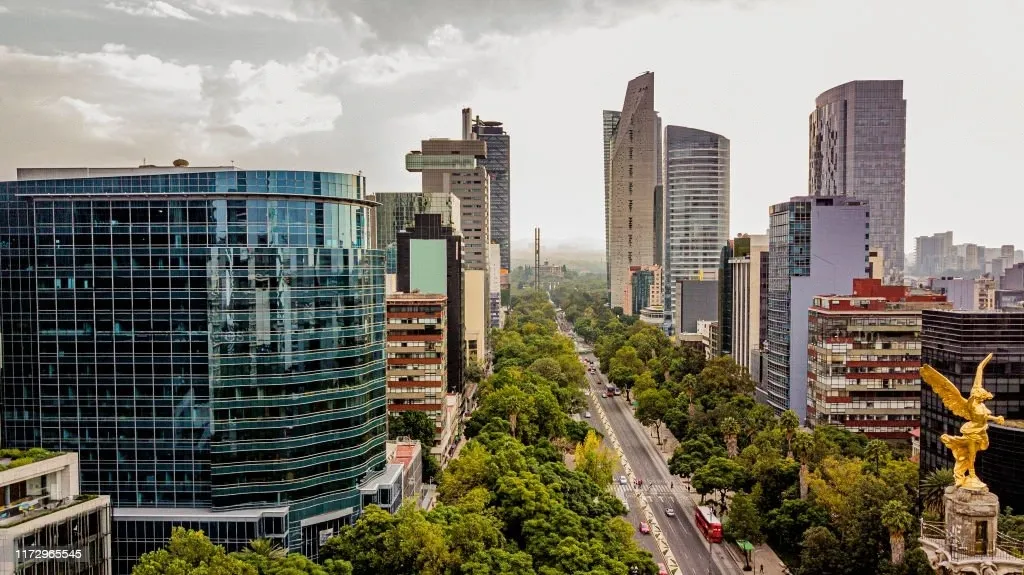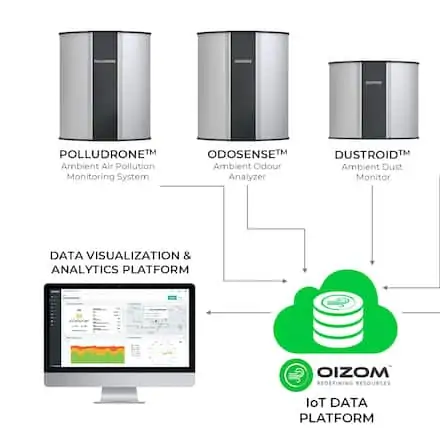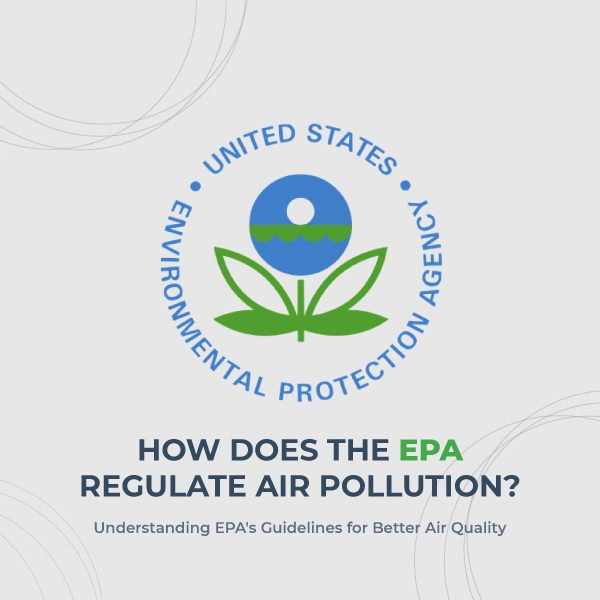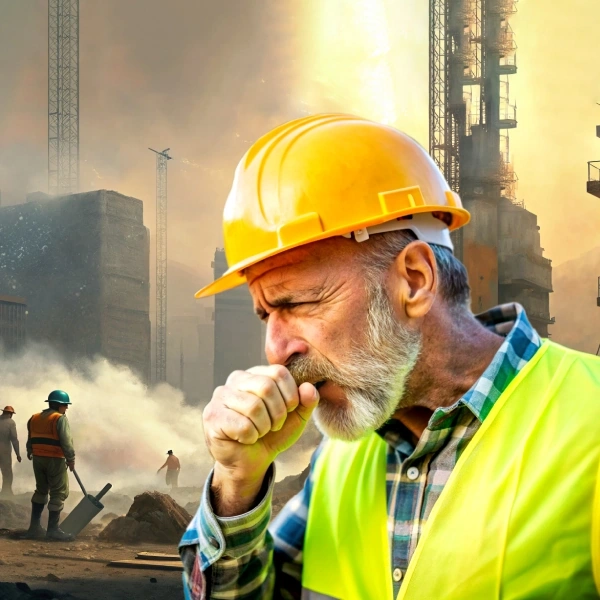Mexico City stands as a paragon of historical richness and cultural diversity, located in the heart of North America. A metropolis teeming with more than 20 million people, it encapsulates the juxtaposition of ancient Aztec temples with modern skyscrapers. But as it moves forward in the 21st century, the city grapples with a tenacious adversary – air pollution. This silent antagonist impacts its citizens’ health, tarnishes its natural beauty, and challenges its modernity.
What is the air quality index of Mexico City?
The Air Quality Index (AQI) is a universally adopted yardstick measuring the amount and severity of atmospheric pollutants. An intuitive numerical scale considers pollutants like PM2.5, PM10, nitrogen dioxide, ozone, and sulphur dioxide.
When discussing AQI, particularly in Mexico City, one must recognise its frequent fluctuations. Ideally, a number below 50 would be optimal for any urban area, indicating minimal pollutants. However, Mexico City, on many occasions, has reported alarming figures exceeding 150. Such numbers signify an immediate health risk and underline an underlying environmental challenge.
What are the sources of air pollution in Mexico City?
While the city’s air pollution crisis is multi-faceted, several prominent culprits emerge:
Wildfires
Wildfires, especially during the dry spell, contribute significantly to the air’s particulate matter content. Fanned by climate change and at times, human activities, these fires release massive amounts of smoke and ash, deteriorating the air quality. This not only clouds visibility but exacerbates respiratory conditions.
Vehicular Emissions
Mexico City’s vehicular love story is long-standing. With an ever-increasing number of cars, especially older models with outdated emissions systems, the city is witnessing an unchecked release of harmful pollutants. The sheer number of cars on the roads and inefficient public transport systems further compound this issue.
Industrial Plant Emissions
The industrial areas surrounding and within Mexico City significantly contribute to its air quality issues. Whether it’s the chemicals from manufacturing plants or emissions from power stations, the unchecked release of these pollutants is a severe environmental hazard. Despite regulations, compliance and modernisation remain a challenge.
Surrounding Mountains
Geography, too, unfortunately, plays its part. Mexico City’s unique location, ensconced by mountains, means that it’s geographically predisposed to trap pollutants. This “bowl” effect hinders the natural dispersion of pollutants, leading to them lingering longer than they would in a more open area.
What is the history of the pollution level in Mexico City?
Tracing the historical pollution trajectory in Mexico City is a journey through its rapid urbanisation. By the late 20th century, its name was synonymous with thick smog and hazed skylines. The 1980s and 1990s, in particular, were dark times. Such was the level of pollution that birds reportedly fell dead out of the sky. There were days when the visibility was so poor and the smog so thick that schools and offices were shut.
However, such dire situations led to strong policy interventions, international partnerships, and a collective rethinking of city planning. Over the last couple of decades, efforts like vehicular restrictions, promotion of public transport, and greening initiatives have played their part in ameliorating the situation.
What is the current air quality in Mexico City?
Today, while the air quality has improved, it’s still far from ideal. Companies like Oizom, with their pioneering air quality monitors, have become indispensable in this new age of environmental consciousness. These strategically placed monitors provide granular data in real-time, offering insights into the hourly, daily, and seasonal pollution patterns.
Causes of Air Pollution in Mexico City
The nexus of causes is complex. Deforestation for urban sprawl reduces the city’s green lungs, making natural air purification harder. Construction dust from the booming real estate sector, lack of stringent industry regulations, and even global phenomena like cross-border pollution contribute to the quandary.
What are the effects of breathing Mexico City’s Poor Quality air?
For the inhabitants, the implications are dire. Short-term effects of air pollution in Mexico manifest as allergies, respiratory issues, and skin problems. Long-term exposure has been linked to more severe conditions like asthma, chronic obstructive pulmonary diseases, and even cognitive decline in children. Economically, this translates to increased healthcare costs and reduced workforce productivity.
Is air pollution in Mexico City getting better or worse?
The narrative isn’t linear. While substantial improvements have been seen since the worst days of the 1990s, the city’s air quality still sees bad days. The increasing population, urbanisation, and policy implementation challenges make it a continuous battle.
How to Protect from Air Pollution in Mexico City?
Protection hinges on awareness and proactive measures. With advanced tools like Oizom’s monitors, one can stay informed in real time. On days with poor AQI readings, limiting outdoor activities is advisable, especially for vulnerable groups like children and the elderly. Masks, air purifiers, and indoor plants can play their part in safeguarding against poor air quality.
Technological Interventions in Combating Air Pollution
In this digital era, technology has carved out a niche as an ally in the fight against environmental degradation. From satellite imaging to ground-level air quality monitoring, there’s a technological revolution unfolding. This is where innovators like Oizom step in.
Role of Real-time Monitoring
Imagine understanding the air you breathe at any given moment. With Oizom’s advanced air quality monitors, this isn’t a futuristic vision; it’s today’s reality. It’s possible to garner a hyperlocal understanding of pollution hotspots by deploying a network of these monitors across urban landscapes. This real-time data informs residents and aids policymakers in targeting interventions more efficiently.
Data Analytics in Environmental Decision-making
It’s not just about collecting data but about deciphering it. Advanced algorithms can predict pollution trends, understand seasonal variations, and even offer insights into current air quality levels’ potential long-term health impacts. Predictive analytics can guide city planners, for instance, in determining the ideal locations for green belts or for imposing stricter industrial regulations in specific zones.
Public Awareness and Digital Engagement
Oizom is not just a tech firm but a platform for community engagement. Through user-friendly dashboards and mobile applications, citizens can engage with air quality data daily. This frequent engagement fosters an environmental consciousness, empowering citizens to make lifestyle changes or advocate for better urban policies.
Collaborative Endeavours for a Cleaner Sky
Air pollution is not a stand-alone issue; it intertwines with urban transportation, waste management, industrial regulation, and even city landscaping. As such, multidisciplinary collaboration becomes paramount.
Public Private Partnerships (PPP)
The private sector, with its technological prowess, and the public sector, with its regulatory muscle, can come together in PPP models. Such collaborations can lead to the large-scale deployment of air quality monitors, comprehensive city planning, and public awareness campaigns.
Community-driven Initiatives
Civil society, NGOs, and community groups play a pivotal role. From tree-planting drives to car-free days, community initiatives can bring ground-level change. When communities are equipped with data from Oizom’s air quality accurate monitor, their actions become more targeted and impactful.
Global Collaborations
Air pollution doesn’t respect borders. As such, international collaborations, knowledge sharing, and global best practices can guide cities like Mexico City in their journey towards cleaner air.
Future Visions
As we peer into the horizon, envisioning a Mexico City with azure skies and breathable air isn’t mere wishful thinking. It’s an attainable reality, albeit one that requires concerted efforts. Addressing the question, “why is Mexico City air quality so bad?” is the first step toward meaningful change—factors like vehicle emissions, industrial pollution, and the city’s unique geography play a crucial role. With technology as our compass and collaboration as our strategy, we can navigate towards a future where Mexico City regains its reputation not as a city shrouded in smog but as a beacon of urban environmental transformation.
Dive into the world of data-driven environmental solutions with Oizom. Be part of the change.






